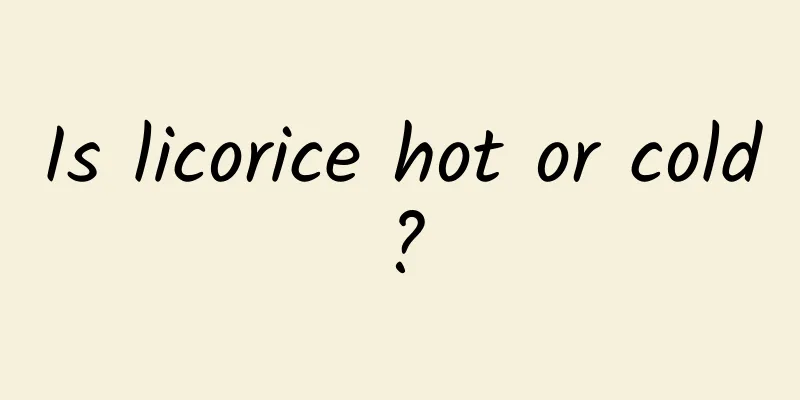It is a good Chinese medicine that makes people love and hate it

|
When I think back to my childhood, I always feel ignorant and naive. At that time, we preferred to play in the mountains and fields, either picking some wild flowers and fruits on the hillside, or catching crickets and butterflies on the ridges of the fields. However, there is one thing that still makes us laugh today: we encountered a bug that could fart. At that time, a few of us caught a bug, but we didn't expect that the bug gave off a foul odor. We were so scared that we quickly threw the bug away, and we didn't dare to eat, for fear that the smell would affect our appetite and stomach. Later, we learned that this insect was actually a traditional Chinese medicine called Jiuxiangchong. The nine-scented bug is a melon black bug of the order Hemiptera, suborder Heteroptera, family Pentatomidae. It is a flying blue-black insect, the size of a fingernail and shaped like a water turtle. Generally in spring and summer, it crawls on the stems and leaves of crops to suck the sap. If you accidentally touch it, it will release a very smelly gas that makes people stay away from it. Therefore, it is also called "stinky board bug", "fart bug" and "fart bug". But what’s interesting is, why is this stink bug also called the nine-scented insect? That's because the stink bug contains nine-fragrant insect oil. Once fried, it becomes a delicious medicinal delicacy that can cure diseases and prolong life. Therefore, after its death, it earned the reputation of "Nine-fragrant Insect". Nine-scented insect is also a Chinese medicinal material with good medicinal value. So, what exactly is the function of this nine-scented insect? Traditional Chinese medicine believes that the nine-scented insect is salty and warm in nature; it enters the liver, spleen, and kidney meridians; it has the effects of regulating qi and relieving pain, warming the middle and assisting yang, and is suitable for stomach cold and bloating, liver and stomach pain, kidney deficiency and impotence, and low back and knee pain; the general oral dosage is 3 to 9 grams. Of course, the application of nine-scented insects in clinical practice is quite extensive. For example, it can relieve stagnant qi in the diaphragm and help treat liver and kidney deficiency. Specifically, you can use 30 grams of half-cooked nine-scented insects, 12 grams of slightly fried Plantago seeds, 12 grams of tangerine peel, 15 grams of Atractylodes macrocephala, and 24 grams of fried Eucommia ulmoides. Grind them into fine powder, and make them into pills with refined honey. The pills should be as big as sycamore seeds. Take 4.5 grams each time, with salt soup or salt wine, on an empty stomach, and take it again before going to bed. Nine-scented insects can also treat impotence caused by kidney deficiency, such as pepper and salt nine-scented insects. The specific usage is to first put 30g of nine-scented insects, put appropriate amount of oil in the pot, and after it is fried until fragrant, stir-fry the nine-scented insects, then add a little pepper powder and salt, and wash it down with wine or warm water. Jiuxiangchong has a good effect on promoting qi and relieving pain. For example, Jiuxiangchong can be used for chest, epigastric and flank pain as long as it is caused by qi stagnation. The specific usage is to take 90 grams of nine-scented insects, 60 grams of roasted whole scorpion, grind them into fine powder, and make pills with refined honey. Each pill weighs 3 grams. Take half a pill each time, which is 1.5 grams, twice a day. Jiuxiangchong can also be used for patients with symptoms such as low back and knee pain caused by liver and kidney deficiency, accompanied by symptoms such as spleen deficiency, poor appetite, qi stagnation, and abdominal fullness. The specific usage is to take 30g of Jiuxiangchong, 25g of Eucommia ulmoides, 15g of Atractylodes macrocephala, and 12g of dried tangerine peel, grind them into fine powder, make pills with refined honey, take 5g each time, once in the morning and evening, with light salt and boiled water. This prescription is unique in that it regulates both the spleen and kidneys. The nine-scented insect and eucommia bark in the prescription can nourish the liver and kidneys and strengthen the waist and knees. The white atractylodes and tangerine peel in the prescription can strengthen the spleen and regulate qi. Generally speaking, the nine-scented insect is caught in spring and autumn. After being caught, it is scalded to death with boiling water and then dried in the sun or in an oven. When stir-frying, you can take the cleaned nine-scented insects and put them in the pot, heat them over low heat, and when the aroma comes out, you can take them out and let them cool for later use. Although Jiuxiangchong has a tonic effect, it is not suitable for patients with Yin deficiency and Yang hyperactivity. |
<<: A tree can cure hangover and rheumatism
>>: Chronic pharyngitis and dry stools really don't need to see a doctor anymore
Recommend
The efficacy and function of stone money
In modern life, everyone is very familiar with va...
The discovery of the rare element "helium" began when scientists chased the sun
The discovery of helium is an interesting story t...
What is Chinese medicine residue?
Although most Chinese medicinal materials are not...
Why do you feel numb after squatting for a long time?
Why do my feet become numb after squatting in the...
People with pollen allergies, please take a look! Learn some tips on how to prevent and treat pollen allergies
It is the peak season for pollen allergies again....
This kind of "black sesame" cannot be eaten, be careful of Datura poisoning!
Datura is an annual herbaceous plant of the Solan...
Can walking speed affect life expectancy?! These 4 walking postures may be a sign of disease!
Walking is something we do every day and is one o...
After 1,935,960 hours, we solved the mystery of bicycle balance
That day, a colleague sent me a video and said he...
Fruit: Why are flowers colorful, but I am so monotonous?
Produced by: Science Popularization China Author:...
The efficacy and function of Vallisneria
I believe many people are familiar with the Chine...
Its selenium content is 41.7 times that of an apple! Fruit cores are also very nutritious, but unfortunately many people throw them away...
Jackfruit, have you eaten it this year? Many peop...
Is there a health risk when washing baby clothes with adult clothes? The truth is surprising...
Author: Nine-pointed Star popular science author ...
I sweated a lot for a month and gained two kilograms. Please be polite and don't come here in summer.
I once heard this saying: "Sweat is the tear...
The taste of yerba mate tea, which is both bitter and fragrant, actually comes from horse manure
I said the carousel on the funfair on Sunday, The...
Many people's hair turns gray too early! Gray hair caused by this factor may turn back to black
How old do you look? It has a direct relationship...









